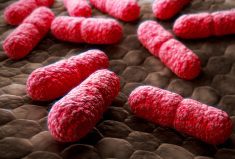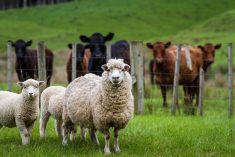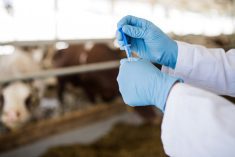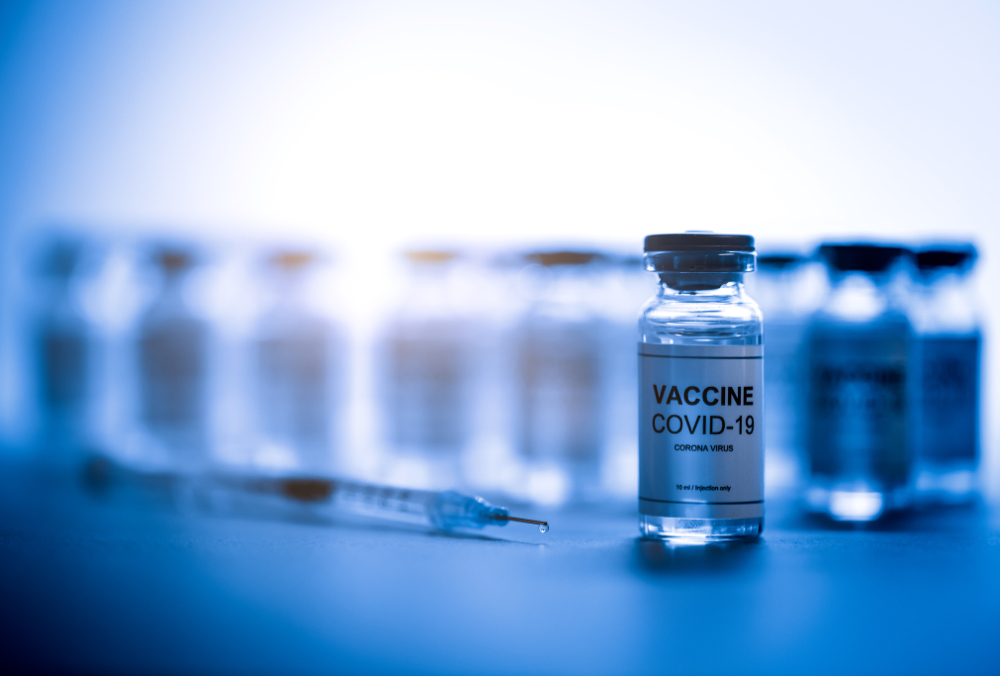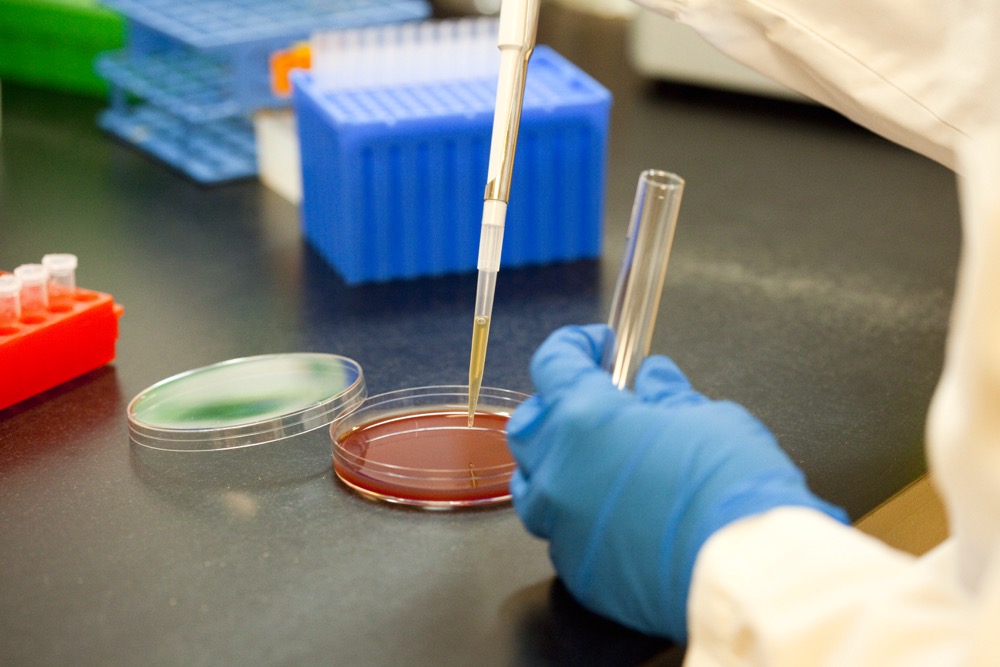Friday, June 13 and a full moon. An astrological phenomenon made for witches and those rummaging for bad omens; an event not to be repeated until 2049 — a cycle of 35 years. It’s an interesting span of time that stirs the imagination of those, like myself, who spend most days wondering about the future. If the past 35 years are any indication, a great deal will change through the next 35, especially when considering emerging disease, issues affecting humans and animals, and the human food supply. There are many events already unfolding requiring special heed if we are going to remain healthy and safely feed ourselves through the next four decades.
Read Also

Body condition, nutrition and vaccination for brood cows
One of the remarkable events of the past century related to ranching has been the genetic evolution of brood cows….
Antimicrobial resistance tops the list. Microbes have emerged as the real predators of the new century. Very few lives haven’t been touched in some way by the resistance of common bacteria to antimicrobials, many tragically. How we control, prevent and treat disease is about to dramatically alter how we produce milk, meat and eggs. Getting bigger and more efficient, which seems inevitable, will have to happen without the routine use of antimicrobials in both preventing disease and enhancing production. Biosecurity, stress reduction, immune stimulation, better vaccines, animal welfare are about becoming better, while submitting to consumer demands. The cost of feeding ourselves will rise, perhaps double, to compensate for necessary change.
Managing risk is paramount. The indiscreet use of precaution can no longer be at play in the game of managing risk. The same can be said for carelessness and voyeurism. A classic example: the billions dedicated to preventing variant Creutzfeldt-Jakob disease (vCJD) between 2000 and 2013, now totalling 220 cases globally over 20 years, in contrast to the thwarted search for answers related to porcine epidemic diarrhea (PED) across Canada and the U.S. that killed eight million pigs over several years. Managing the risks associated with BSE (mad cow disease), once rendered animal products were identified as the primary link between animals and human vCJD, dulled the senses of our research community, while a new disease like PED was allowed to emerge and run rampant through an industry. Cause and prevention were orphaned in the shadow of inadequate swine biosecurity and common-sense sanitation of vehicles transporting livestock across Canada and the U.S.
- More Vet Advice with Dr. Ron Clarke: Trichomoniasis is still a threat
The recent flap over a single case of vCJD in Texas acquired during travel highlights the inadequacies in our ability to manage risk. It stands in stark contrast to Dr. Lyle Peterson’s recent address to the American Society of Microbiology where he named Chikungunya virus as the biggest threat in U.S. epidemiology. The virus’s arrival in the Western Hemisphere was probably through an infected traveller. Chikungunya disease, similar to dengue fever — another emerging disease — is historically a mosquito-transmitted disease of Asia and Africa. The virus causes an acute illness with high fever and varying periods of joint pain that may persist for years. Recently, Chikungunya reached epidemic proportions in the Caribbean with 51,000 cases across 12 countries within months. There is widespread fear that international crowds attending the FIFA World Cup will introduce it to Brazil. While neither Chikungunya nor dengue fever is related to animal production, they represent serious diseases spurred by burgeoning globalization and environmental change.
These events, along with the emergence of Schmallenberg virus and the spread of bluetongue virus out of the Mediterranean basin should signal animal agriculture that new and highly infectious microbes spread easily between nations. The potential for disease to create ecological disaster will only be tempered by vigilant surveillance and essential control of invasive species, both seriously underfunded.
Another example is the all-too-familiar story of West Nile virus (WNV) from the time it walked off a ship in 1999 and invaded crow rookeries in New York City. Migratory birds and mosquitoes quickly spread WNV across North America. The advance of human cases followed avian deaths. A worrisome feature of WNV is the change occurring in its epidemiology and clinical features. Human outbreaks are more frequent and often associated with severe illness. Historical patterns of WNV provide few indications as to the future behaviour of the virus in North America. In addition to avian and human illness, many horses are affected. West Nile became the leading cause of human arboviral disease (insect spread) in the U.S. (nearly 2,500 cases last year with 1,300 progressing to brain infections).
The world holds its breath about a deadly new virus for which there is no cure and about which little is understood. It’s called Middle Eastern respiratory syndrome coronavirus (MERS-CoV), a new pathogen that could present a global threat. The virus causes coughing, fever and pneumonia and has a death rate of about 30 per cent. Confirmation that domestic camels serve as reservoirs and a recent upswing in cases has health officials on high alert. MERS was first reported in 2012 in Saudi Arabia. Cases linked to travellers in the Gulf have cropped up in 13 countries. So far in 2014, more cases have been detected than combined totals in 2012 and 2013. The Centre for Disease Control in the U.S. is preparing for the first case of MERS to walk off an airplane onto American soil. About one million Muslims are expected to travel to Saudi Arabia in early October, for the Hajj, presenting the potential for a global spike in infections.
Animal agriculture recently found itself embroiled in another case of animal abuse that eventually went viral. A case that saw Canada’s largest dairy processor, Saputo, suspend pickup of milk from Canada’s largest dairy (Chilliwack Cattle Sales) until corrective measures were instituted. Animal welfare, an integral part of modern food production, is now everyone’s business. Agriculture now finds itself impelled to follow standards often established in the court of public opinion.
This article first appeared in the July 2014 issue of Canadian Cattlemen
Dr. Ron Clarke prepares this column on behalf of the Western Canadian Association of Bovine Practitioners. Suggestions for future articles can be sent to Canadian Cattlemen ([email protected]) or WCABP ([email protected]).




